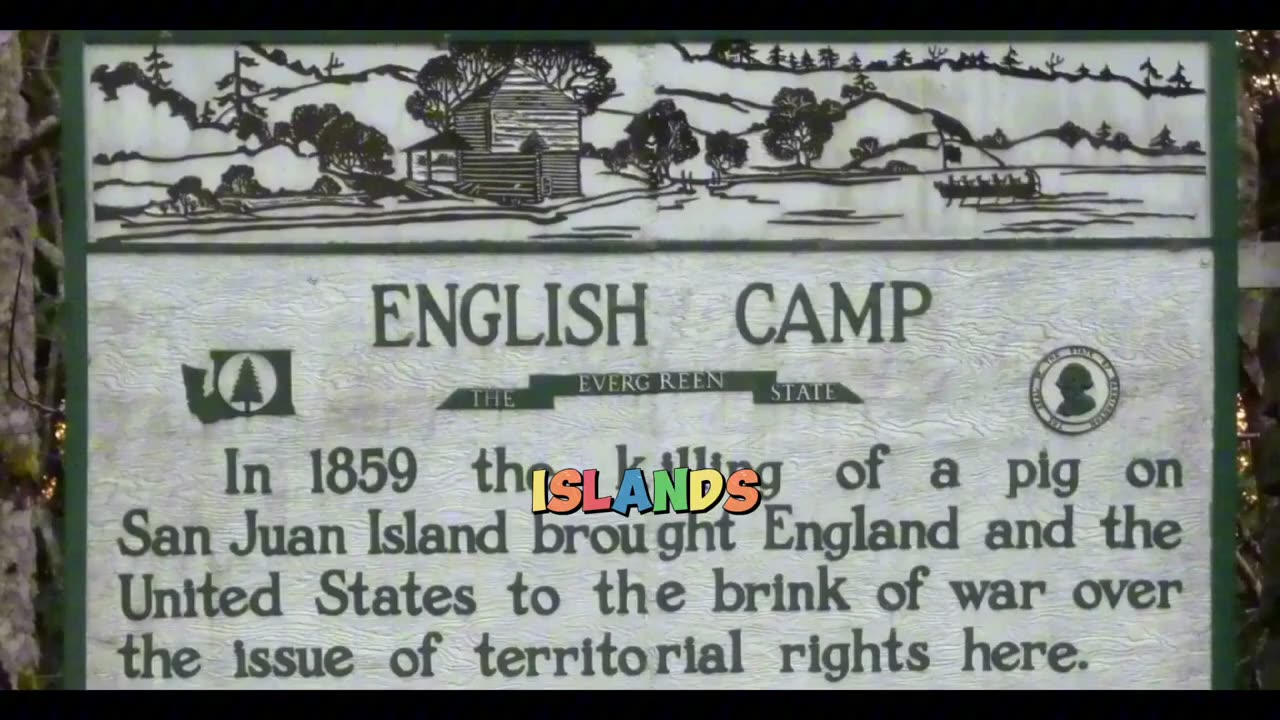Premium Only Content

The Pig War: A Border Dispute Between the U.S. and Canada that Almost Led to War over a Pig
In the mid-19th century, a strange and seemingly comical border dispute between the United States and Canada nearly escalated into a full-blown war. This peculiar conflict, known as the Pig War, centered around a single pig and its unfortunate role in a territorial controversy. Although it may sound absurd, the events surrounding the Pig War highlight the importance of maritime boundaries and the potential for small disputes to escalate into major conflicts.
The Background
In the mid-1800s, the San Juan Islands, located between Vancouver Island and the mainland of Washington State, became a focal point of contention between the United States and Britain, which governed Canada at the time. This territorial dispute stemmed from the vagueness of the 1846 Oregon Treaty, which defined the U.S.-Canadian border. The treaty failed to determine which country had rightful ownership of the San Juan Islands.
The Pig Incident
In June 1859, an American settler named Lyman Cutlar discovered a black pig foraging in his garden on San Juan Island. Angered by the intrusion, Cutlar shot and killed the pig, which happened to be owned by an Irishman named Charles Griffin, who was working for the Hudson's Bay Company and resided on the neighboring British-owned island of Vancouver.
Escalation and Military Buildup
Griffin demanded compensation from Cutlar, but the American settler refused, arguing that the pig had been trespassing on his property. The disagreement quickly intensified, and both parties sought assistance from their respective governments. Tensions rose, and both the British authorities and U.S. military engaged in a military buildup, realizing the potential for violence.
Resolution through Diplomacy
Realizing the absurdity of going to war over a single pig, leaders from both nations chose to pursue a diplomatic resolution. To prevent any further escalation, British Rear Admiral Robert Baynes and American General William S. Harney arrived on the island with additional forces.
Joint Occupation
Both the United States and Britain agreed to maintain a joint military occupation of San Juan Island until the boundary dispute could be settled. For the next twelve years, British and American troops coexisted peacefully, earning the period the name "Pig War" due to its ridiculous origin. The soldiers established small camps, and both sides converted their military presence into a friendly cooperative effort.
Arbitration and the final verdict
To resolve the broader territorial dispute over the San Juan Islands, both nations agreed to submit the matter to an international arbitration commission. In 1872, after thoroughly investigating the issue, the commission ruled in favor of the United States, stating that the San Juan Islands belonged to the United States.
The Legacy of the Pig War
Although the Pig War did not result in any casualties, it brought attention to the importance of clear and defined boundaries. This seemingly trivial conflict between the U.S. and Canada served as a reminder that even minor disputes over territory can potentially escalate into much larger conflicts.
Conclusion
The Pig War, a border dispute between the United States and Canada, brought together military forces over a single pig but ultimately ended peacefully. The resolution through diplomacy and subsequent international arbitration highlighted the significance of clearly defined boundaries and the importance of peaceful resolution in territorial disputes. With the passage of time, the Pig War has become an interesting footnote in history, reminding us of the potential consequences of even the most seemingly absurd disputes.
-
 38:47
38:47
MattMorseTV
4 hours ago $7.52 earned🔴Tulsi just CLEANED HOUSE.🔴
33.9K56 -
 LIVE
LIVE
Reolock
5 hours agoWoW Classic Hardcore | WE'RE BACK!!
112 watching -
 3:46:13
3:46:13
SynthTrax & DJ Cheezus Livestreams
7 hours agoShell Shock Live - The Scorched Earth Remake/Upgrade - 4pm PST / 7pm EST - RUMBLE GAMING
25.6K -
 2:56:57
2:56:57
Illyes Jr Gaming
3 hours agoBack to Black .....Ops 6 w/ ILLYESJRGAMING
15.7K1 -
 1:07:59
1:07:59
BonginoReport
6 hours agoBoston Mayor Defies Trump, Protects Illegals - Nightly Scroll w/ Hayley Caronia (Ep.115)
115K81 -
 40:45
40:45
Donald Trump Jr.
7 hours agoPeace by Peace: Solving One Problem After Another | Triggered Ep.268
63.7K57 -
 LIVE
LIVE
FrizzleMcDizzle
4 hours ago $1.31 earnedRemnant 2 - Dark Souls-like Shooter?!
114 watching -
 LIVE
LIVE
FoeDubb
2 hours ago🏰KINGDOM MENU: 🎮DELTA FORCE PEW PEWS & 👑CHILL CONVO DILLY DILLY!!
14 watching -
 11:43:31
11:43:31
GritsGG
14 hours agoWin Streaking! Most Wins 3390+ 🧠
65.6K -
 1:08:29
1:08:29
TheCrucible
6 hours agoThe Extravaganza! Ep. 24 (8/19/25)
83.4K20